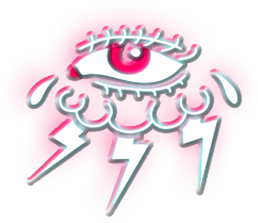Thorazine: chemical straitjacket
This is the absolutely bonkers tale of Thorazine, the wonder drug that turned mental hospitals into zombie discos!
Picture this: It’s the 1950s, and French scientists are busy cooking up antihistamines like they’re trying to win a sneezing contest. But oops! They accidentally create a drug that makes people act like they’ve had a lobotomy and a bottle of whiskey for breakfast. Genius!
Enter Henri Laborit, a French naval surgeon who thinks, “Hey, what if we use this to knock out patients before surgery?” Because nothing says “bedside manner” like chemically induced vegetation. He notices patients become calmer and more detached, probably because they’re too busy drooling to be anxious.
Meanwhile, across the pond, Smith, Kline & French (now GlaxoSmithKline) is twiddling its corporate thumbs, dreaming of the next big thing. They hear about this magical French potion and think, “Sacrebleu! We must have it!” They buy the rights faster than you can say “pharmaceutical gold rush.”
In 1954, Thorazine hits the U.S. market like a tranquilizer-laced tornado. Within eight months, two million patients are popping these pills like candy. Suddenly, mental hospitals are quieter than a mime convention. Who needs padded cells when you’ve got chemical straitjackets?
But wait, there’s more! Thorazine becomes the poster child for deinstitutionalization. Because nothing says “you’re cured” like being dumped on the street with a bottle of pills and a pat on the back. It’s like a game of psychiatric musical chairs, but when the music stops, you’re either zombified or on a park bench.
So, there you have it, folks. Thorazine: from antihistamine mishap to mind-numbing miracle. Proving once and for all that sometimes, the best way to solve a problem is to create a whole new set of problems. It’s not just a drug; it’s an adventure in chemical lobotomy.
Bibliography
- López-Muñoz, F., et al. (2005). “Fifty years chlorpromazine: a historical perspective.” Progress in Neuro-Psychopharmacology and Biological Psychiatry, 29(3), 485-490.
- Wikipedia contributors. (2024). “Henri Laborit.” Wikipedia.
- Rouhi, A. M. (2005). “Thorazine.” Chemical & Engineering News, 83(25).
- Wikipedia contributors. (2024). “Chlorpromazine.” Wikipedia.
- Science History Institute. (n.d.). “Paul Charpentier, Henri-Marie Laborit, Simone Courvoisier, Jean Delay, and Pierre Deniker.”
- Bueno, J. L. P., & Mota, C. M. (2021). “From antihistamines to antipsychotics: the discovery of chlorpromazine and the management of madness.” História, Ciências, Saúde-Manguinhos, 28(3), 801-818.
- Beckman Coulter. (2022). “A Brief History of Antipsychotic Meds.”
- PBS. (n.d.). “People and Discoveries: Drug for treating schizophrenia identified.”
- British Association for Psychopharmacology. (2016). “Chlorpromazine, the first antipsychotic medication: history, controversy and legacy.”


Leave a Reply